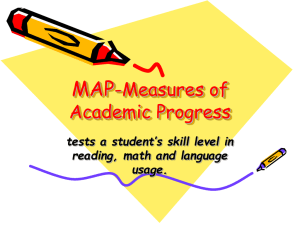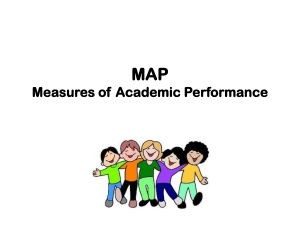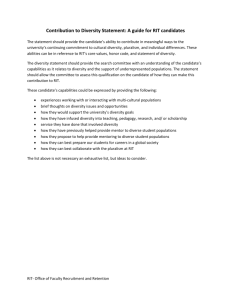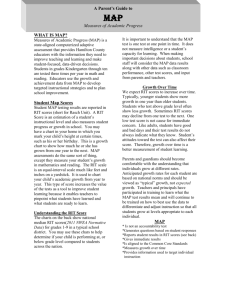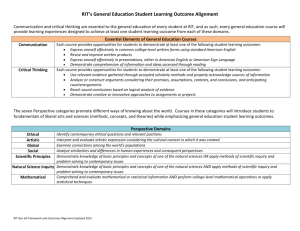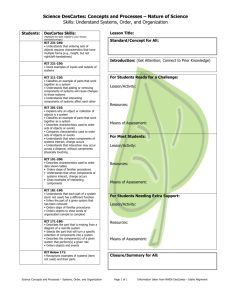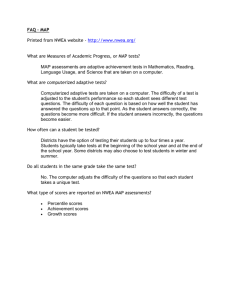The RIT (Rausch UnIT) Scale
advertisement
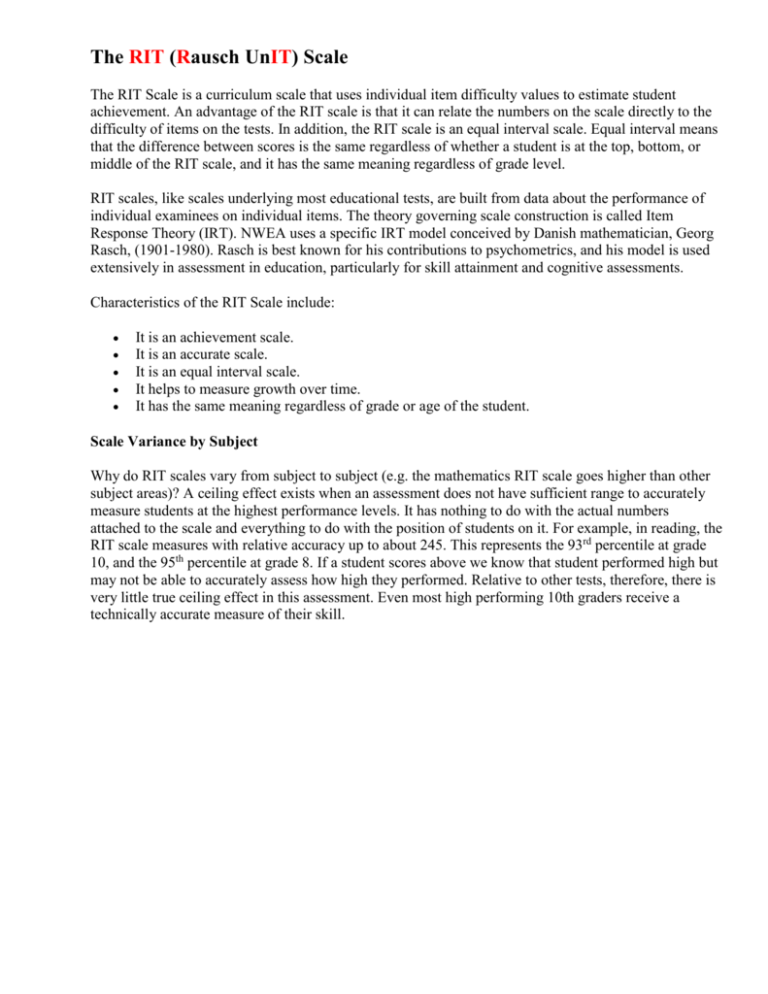
The RIT (Rausch UnIT) Scale The RIT Scale is a curriculum scale that uses individual item difficulty values to estimate student achievement. An advantage of the RIT scale is that it can relate the numbers on the scale directly to the difficulty of items on the tests. In addition, the RIT scale is an equal interval scale. Equal interval means that the difference between scores is the same regardless of whether a student is at the top, bottom, or middle of the RIT scale, and it has the same meaning regardless of grade level. RIT scales, like scales underlying most educational tests, are built from data about the performance of individual examinees on individual items. The theory governing scale construction is called Item Response Theory (IRT). NWEA uses a specific IRT model conceived by Danish mathematician, Georg Rasch, (1901-1980). Rasch is best known for his contributions to psychometrics, and his model is used extensively in assessment in education, particularly for skill attainment and cognitive assessments. Characteristics of the RIT Scale include: It is an achievement scale. It is an accurate scale. It is an equal interval scale. It helps to measure growth over time. It has the same meaning regardless of grade or age of the student. Scale Variance by Subject Why do RIT scales vary from subject to subject (e.g. the mathematics RIT scale goes higher than other subject areas)? A ceiling effect exists when an assessment does not have sufficient range to accurately measure students at the highest performance levels. It has nothing to do with the actual numbers attached to the scale and everything to do with the position of students on it. For example, in reading, the RIT scale measures with relative accuracy up to about 245. This represents the 93rd percentile at grade 10, and the 95th percentile at grade 8. If a student scores above we know that student performed high but may not be able to accurately assess how high they performed. Relative to other tests, therefore, there is very little true ceiling effect in this assessment. Even most high performing 10th graders receive a technically accurate measure of their skill.


